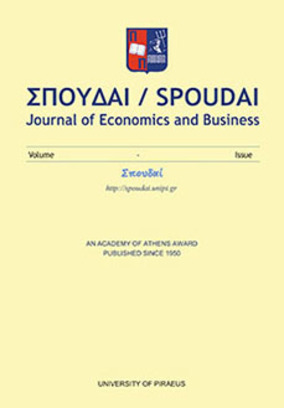Οικονομετρικά υποδείγματα και οικονομικές - διοικητικές αποφάσεις : ιστορία των εμπειρικών ερευνών κατά την προπολεμική περίοδο
Part of : Σπουδαί : journal of economics and business ; Vol.53, No.2, 2003, pages 90-116
Issue:
Pages:
90-116
Parallel Title:
Econometric models and economic-administrative decisions. The history of empirical research in the pre-war period
Author:
Abstract:
Research attempts dating back to the mid-19th century, with the work of A. Cournot, Von Thunen and E. Engel, as well as other economists, in particular A. Marshall and L. Walras, led to the first econometric application in 1907, when R. Benini tried to estimate the elasticity of demand for coffee in Italy. Since 1910, econometric studies have moved in four different directions: (i) the forecasting of the economic conjuncture by using economic barometers; (ii) the estimation of demand functions; (iii) the estimation of marginal propensity to consume, which would lead to the construction and estimation of simple macroeconomic models, and (iv) the econometric analysis of production. The decade before World War II is therefore seen as a turning point for econometrics, as a substantial body of literature was produced and a large number of econometric. As a result of development and progress in this area, quantitative methods have been applicated and were published established as the most robust and reliable approach to economic and administrative decision-making in the post-war period, while econometrics is considered to be, according to L. Klein, the front line of economics.
Subject (LC):
Notes:
Περιέχει διάγραμμα, πίνακες, αρθρογραφία και βιβλιογραφίες, Εκφράζω τις ευχαριστίες µου στους Οµότιµους Καθηγητές κ. Χρήστο Τζεκίνη (Lakehead University, Ontario Canada) και κ. Λάζαρο Χουµανίδη (Πανεπιστήµιο Πειραιώς), καθώς και στον συνάδελφο και φίλο Δρα Γιώργο Σαπουνά, για τα πολύτιµα σχόλιά τους.




